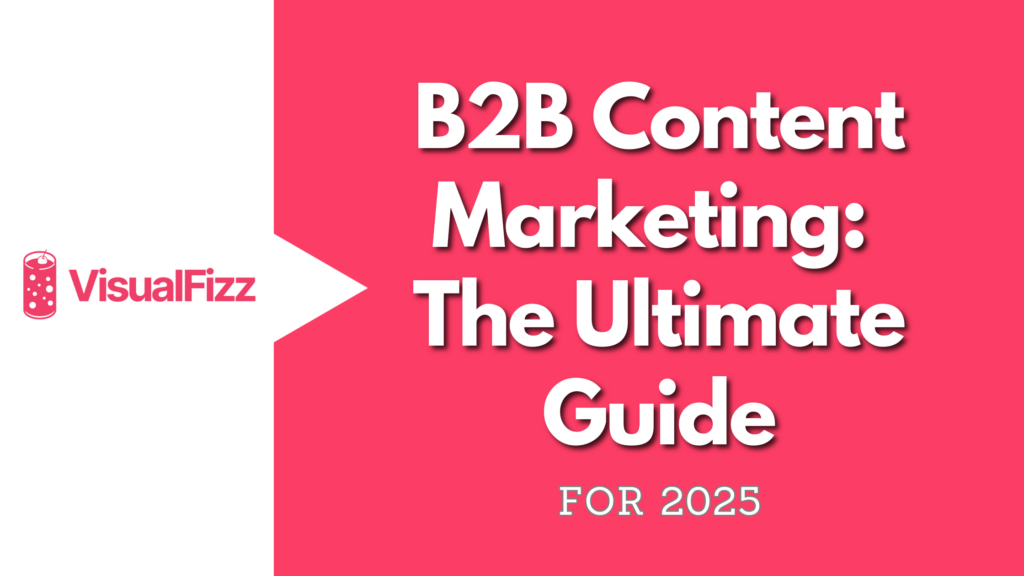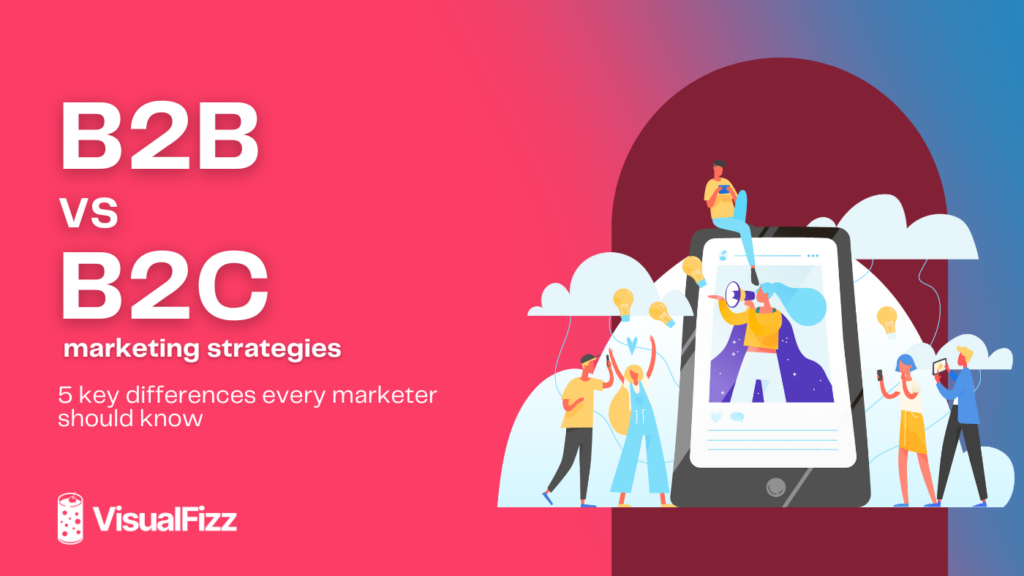
The digital landscape is in constant flux, and the way users find information is evolving rapidly. While Search Engine Optimization (SEO) has long been the cornerstone of online visibility, a new discipline is emerging: Generative Engine Optimization (GEO). This guide will provide an ultra-in-depth exploration of GEO, including its core principles, optimization strategies, real-world applications, and how it fundamentally differs from and complements traditional SEO.
Generative Engine Optimization (GEO): The New Frontier of Discoverability
Generative Engine Optimization (GEO) is the strategic process of creating and structuring content so that it is easily understood, processed, and utilized by AI-powered generative engines. These engines, such as those powering Google’s AI Overviews (formerly SGE), ChatGPT, Perplexity AI, and Microsoft Copilot, don’t just provide a list of links; they synthesize information from various sources to deliver direct, conversational, and comprehensive answers to user queries.
The primary goal of GEO is not to rank #1 in a traditional search engine results page (SERP), but to become a cited and trusted source within the AI-generated response itself. This means your content needs to be “AI-friendly,” providing clear, authoritative, and well-structured information that these sophisticated algorithms can readily leverage.

GEO vs. SEO: Understanding the Key Differences and Synergies
While both GEO and SEO aim to increase online visibility and connect users with relevant information, their focus and methodologies differ significantly.
| Feature | Search Engine Optimization (SEO) | Generative Engine Optimization (GEO) |
| Primary Goal | Rank high in traditional SERPs (e.g., Google, Bing) for specific keywords. | Be cited and featured in AI-generated responses and summaries. |
| User Interaction | Users click on links to visit web pages. | Users receive direct answers, potentially reducing clicks to websites (zero-click searches). |
| Content Focus | Keyword optimization, backlink building, technical site health. | Clarity, conciseness, factual accuracy, structured data, conversational language, E-E-A-T (Experience, Expertise, Authoritativeness, Trustworthiness). |
| Output Format | List of blue links, featured snippets, knowledge panels. | Conversational responses, synthesized summaries, direct answers. |
| Algorithm Type | Primarily ranking algorithms based on relevance and authority signals. | Large Language Models (LLMs) and other AI that understand and generate human-like text. |
| Measurement | Rankings, organic traffic, click-through rates (CTR), conversions. | Mentions in AI responses, brand visibility in AI tools, referral traffic from AI platforms, sentiment in AI summaries. |
It’s crucial to understand that GEO does not replace SEO; it builds upon and complements it. Strong SEO fundamentals, such as high-quality content, a technically sound website, and established authority, provide a solid foundation for GEO. Think of SEO as getting your ingredients noticed by the chef (the search engine), while GEO is about ensuring your ingredients are so good and well-presented that the chef chooses to feature them prominently in the final dish (the AI-generated answer).
Many of the signals that traditional search engines use, like E-E-A-T, are also vital for GEO. AI engines are designed to prioritize credible and trustworthy information. Therefore, a website that already performs well in traditional search due to its quality and authority is often a strong candidate for GEO success.
The Ultra In-Depth Guide to Optimizing for Generative Engines
Optimizing for generative engines requires a nuanced approach that goes beyond traditional keyword stuffing or solely focusing on backlinks. Here’s a comprehensive breakdown of how to optimize your content for high-quality inclusion in AI-generated responses:
1. Create High-Quality, Authoritative, and Trustworthy Content (E-E-A-T on Steroids)
This is the bedrock of both SEO and GEO. Generative engines are designed to find and synthesize the most reliable and helpful information.
- Demonstrate Expertise: Showcase deep knowledge in your niche. Create comprehensive content that covers a topic thoroughly.
- Example: Instead of a brief overview of “sustainable gardening,” create a detailed guide covering soil health, companion planting, natural pest control, water conservation, and specific plant recommendations, all backed by horticultural principles.
- Showcase Experience: Share real-world insights, case studies, and practical applications.
- Example: A financial advisor optimizing for GEO could share anonymized client success stories (with permission) demonstrating how their advice led to tangible positive outcomes, rather than just listing services.
- Build Authoritativeness: Establish yourself or your brand as a recognized leader in your field. This can be achieved through publications, speaking engagements, positive reviews, and mentions on other reputable sites.
- Example: An article on a new medical treatment written by a board-certified specialist with published research in peer-reviewed journals will carry more weight for an AI engine than an anonymous blog post.
- Ensure Trustworthiness: Be transparent, accurate, and objective. Cite sources, provide evidence for claims, and make it easy for users (and AI) to verify your information. Clearly display author bios with credentials.
- Example: If presenting statistics, link directly to the research or data source. For product reviews, disclose any affiliate relationships.
2. Focus on User Intent and Conversational Language
Generative engines excel at understanding natural language and the underlying intent of a user’s query.
- Address Specific Questions: Think about the exact questions your audience is asking. Use tools like “People Also Ask” sections in Google, AnswerThePublic, or conduct customer surveys.
- Example: Instead of targeting the broad keyword “digital marketing,” optimize content to answer specific questions like, “What is the most effective way for a small business to start with digital marketing?” or “How much should a startup budget for social media advertising?”
- Write in a Natural, Conversational Tone: Avoid overly academic or jargon-filled language unless your target audience is highly specialized. Write as if you’re explaining a concept to a colleague or a curious friend.
- Example: Instead of: “The implementation of synergistic strategies culminates in enhanced market penetration,” try: “When different marketing tactics work together, your business can reach more customers.”
- Optimize for Long-Tail Keywords and Semantic Search: These are longer, more specific phrases that users type into search engines or ask voice assistants. AI engines are adept at understanding the context and relationships between words (semantics).
- Example: A user might ask an AI, “What are the best vegetarian restaurants in downtown Chicago that are good for a first date and have outdoor seating?” Your content should aim to provide information that helps answer such multi-faceted queries.
3. Structure Your Content for AI Readability and Summarization
LLMs process vast amounts of text. Well-structured content is easier for them to parse, understand, and extract information from.
- Use Clear Headings and Subheadings (H1, H2, H3, etc.): Organize your content logically. Headings act as signposts for AI, helping it understand the hierarchy and main points of your content.
- Example: For an article on “Email Marketing Best Practices,” use H2s like “Building Your Email List,” “Crafting Engaging Subject Lines,” “Designing Effective Email Templates,” and “Analyzing Your Email Performance.”
- Employ Bullet Points and Numbered Lists: These formats are easily digestible for both humans and AI, making them ideal for summarizing key information or steps in a process.
- Example: When explaining the benefits of a product, use a bulleted list for quick scanning rather than a dense paragraph.
- Write Concise Paragraphs: Shorter paragraphs, each focusing on a single idea, improve readability and make it easier for AI to extract specific pieces of information.
- Create FAQ Sections: Directly answer common questions related to your topic. This format is highly favored by generative engines.
- Example: If you sell software, include an FAQ addressing questions about pricing, features, integrations, and support.
- Front-Load Key Information: Place the most important information or the direct answer to a potential query at the beginning of a section or paragraph.
- Example: If a section is titled “How to Brew the Perfect Cup of Coffee,” start with the essential steps or the most critical factor (e.g., “The key to a perfect cup of coffee starts with freshly ground, high-quality beans.”).
4. Implement Structured Data (Schema Markup)
Schema markup is a code vocabulary that you add to your website’s HTML to help search engines (and generative engines) better understand your content.
- Utilize Relevant Schema Types: Use schema types like FAQPage, HowTo, Article, Product, LocalBusiness, Event, Recipe, etc., depending on your content.
- Example: For a recipe page, use Recipe schema to define ingredients, cooking time, nutritional information, and steps. This makes it very easy for an AI to pull this specific data. For a local business, ensure your LocalBusiness schema includes accurate NAP (Name, Address, Phone Number) information, opening hours, and services offered.
- Ensure Accuracy: The information in your structured data must accurately reflect the content on the page. Implementing schema markup effectively can be complex; partnering with technical SEO experts can ensure it’s done correctly and yields the best results.

5. Prioritize Content Freshness and Accuracy
AI models are increasingly trained on up-to-date information. Outdated or incorrect content is less likely to be surfaced.
- Regularly Update Your Content: Review and refresh your existing content, especially cornerstone pieces, to ensure all information (statistics, facts, product details) is current.
- Example: An article about “Top Social Media Trends” from 2022 will be far less valuable (and less likely to be cited by an AI in 2025) than one updated with the latest trends and data.
- Fact-Check Rigorously: Ensure all claims and data points are accurate and, where possible, cite authoritative sources.
6. Build Topical Authority and Content Clusters
Demonstrate comprehensive knowledge around specific topics rather than creating shallow content on a wide array of unrelated subjects.
- Create Pillar Pages and Topic Clusters: Develop a main “pillar” page for a broad topic and then create a “cluster” of more specific articles that link back to the pillar page and to each other. This signals to AI that you have in-depth expertise in that area.
- Example: A website about pet care could have a pillar page on “Dog Training.” Cluster content could include articles on “Leash Training a Puppy,” “Crate Training Benefits,” “Positive Reinforcement Techniques,” and “Solving Common Dog Behavior Problems.”
7. Encourage Engagement and Real-World Validation
While direct ranking signals might differ, indicators of your content’s value in the real world can indirectly influence AI.
- Foster User Engagement: Comments, shares, and discussions around your content can signal its relevance and quality.
- Seek Mentions and Citations: When other authoritative websites, publications, or experts cite your content, it reinforces its credibility. This is similar to the concept of backlinks in traditional SEO.
- Leverage Social Media: Share your content on relevant social media platforms. While direct social signals to AI ranking are still being understood, a strong social presence can increase visibility and drive traffic, indirectly contributing to authority.
8. Ensure Technical Soundness and Accessibility
Just as with SEO, your website needs to be technically sound and accessible for generative engines to effectively crawl and understand your content.
- Website Speed: Faster loading times improve user experience and are favored by all search algorithms.
- Mobile-Friendliness: Ensure your website is responsive and provides a good experience on all devices.
- Crawlability and Indexability: Make sure generative engine bots can access and crawl your content (check robots.txt for unintentional disallows of AI crawlers like GPTBot).
- Clear Navigation: A logical site structure helps both users and AI discover content.
9. Monitor and Adapt: The GEO Feedback Loop
GEO is an evolving field. Continuous monitoring and adaptation are key.
- Test Your Content in AI Engines: Use various generative AI tools (ChatGPT, Gemini, Perplexity, etc.) to ask questions related to your niche and see if and how your content is being surfaced or cited. Analyze the responses:
- Is your brand mentioned?
- Is the information accurate?
- What sources are being prioritized if not yours?
- What kind of language and structure does the AI seem to favor?
- Track Referral Traffic: Use analytics tools (like GA4) to monitor referral traffic from AI platforms. This can indicate that users are clicking through from citations in AI-generated answers.
- Monitor Brand Mentions and Sentiment: Keep an eye on how your brand is being discussed in AI-generated content across the web. Tools are emerging to help track this.
- Stay Informed: Follow industry news and research on GEO and AI in search to understand the latest trends and algorithm updates.

Planning for Generative Engine Optimization: A Strategic Approach
Integrating GEO into your content strategy requires careful planning:
- Audit Your Existing Content:
- Identify your highest-performing content (from an SEO and user engagement perspective). This is often low-hanging fruit for GEO.
- Assess its current AI-friendliness based on the optimization points above.
- Look for content gaps: What questions are your audience asking that you haven’t answered comprehensively?
- Conduct GEO-Focused Keyword and Query Research:
- Go beyond traditional short-tail keywords.
- Focus on natural language questions, long-tail queries, and problem-based searches.
- Think about “who, what, when, where, why, and how” questions related to your products, services, and industry.
- Develop a GEO-Centric Content Calendar:
- Prioritize creating content that directly answers user questions in a clear, structured, and authoritative way.
- Incorporate formats that AI favors, such as FAQs, in-depth guides, and listicles (when appropriate and high-quality).
- Plan for regular content updates and refreshes.
- Integrate GEO into Your Workflow:
- Educate your content creators, SEO specialists, and marketers about GEO principles.
- Make GEO considerations (e.g., clarity, structure, conversational tone, E-E-A-T) part of your content creation and review process.
- Incorporate schema markup implementation as a standard step.
- Establish GEO KPIs and Reporting:
- While still an emerging area, start thinking about how to measure GEO success. This might include:
- Frequency of brand/content citations in AI responses (manual checking or using emerging tools).
- Referral traffic from AI platforms.
- Changes in direct traffic and branded search volume (as users may search for your brand after seeing it in an AI response).
- Qualitative analysis of how your brand and information are represented in AI summaries.
- While still an emerging area, start thinking about how to measure GEO success. This might include:
- Consider “Seed” Content and Partnerships:
- Target LLM-Friendly Sites for Guest Posting: If guest posting is part of your strategy, ensure the sites you target allow their content to be crawled by LLMs (check their robots.txt).
- Focus on High-Authority Content Partnerships: Collaborating with established, authoritative publications or experts can increase the likelihood of your information being trusted and used by AI. Even if LLMs don’t use E-E-A-T in the exact same way as Google’s search algorithm, they are trained on data where authoritative sources are prevalent.
- Strategic Mentions: Encourage influential individuals or publications who genuinely value your product/service to mention it in their online content. LLMs identify patterns, and frequent, positive mentions from credible sources can influence how they describe your brand.
Real-World Applications and Examples of GEO
The impact of GEO is already being seen across various sectors:
- E-commerce: A user asks, “What’s the best eco-friendly running shoe for wide feet?” A brand that has GEO-optimized its product descriptions, FAQs, and review summaries to clearly highlight these specific features is more likely to be mentioned in the AI’s recommendation.
- Optimization Example: The shoe brand ensures its product page has a dedicated FAQ section answering questions like “Are these shoes suitable for wide feet?” and “What sustainable materials are used in these shoes?”. They also use Product schema markup detailing these attributes.
- Information & How-To Content: A user queries, “How do I build a raised garden bed?” A DIY website with a clear, step-by-step guide, structured with H2 headings for each step, bullet points for materials, and potentially a HowTo schema, is a prime candidate for the AI to synthesize its answer from.
- Optimization Example: The DIY site breaks down the process into logical, actionable steps: “1. Choose Your Location,” “2. Gather Your Materials (with a bulleted list),” “3. Assemble the Frame,” etc. They might also include a short video tutorial embedded in the content.
- Local Businesses: Someone asks their voice assistant, “Find a top-rated Italian restaurant near me that’s open now and has gluten-free options.” A restaurant that has meticulously optimized its Google Business Profile, website content (mentioning gluten-free options clearly), and structured data (LocalBusiness schema with opening hours and menu details) is more likely to be suggested.
- Optimization Example: The restaurant’s website has a dedicated menu page with a clear “Gluten-Free Options” section. Their Google Business Profile Q&A also proactively answers questions about dietary accommodations.
- B2B Services: A business owner asks an AI, “What are the key considerations when choosing a CRM for a small sales team?” A CRM provider whose blog content and white papers clearly address this question, outlining factors like ease of use, integration capabilities, pricing, and scalability in a structured manner, could be featured in the AI’s summary.
- Optimization Example: The CRM provider publishes a comprehensive article titled “A Small Business Guide to Selecting the Right CRM.” The article uses clear headings for each consideration (“Scalability,” “Ease of Integration,” “Pricing Models”) and includes a comparative table or a checklist. They also ensure their site has strong E-E-A-T signals, like case studies from small business clients. For specialized insights into leveraging GEO for B2B, exploring B2B marketing strategies can provide additional advantages.
- Healthcare Information: A user searches, “What are the common early symptoms of type 2 diabetes?” Reputable health organizations (like the Mayo Clinic or the CDC) that provide clear, accurate, and easily digestible information on this topic, often in FAQ or bulleted list format, are consistently cited by AI.
- Optimization Example: A health information portal ensures its article on type 2 diabetes symptoms is medically reviewed, clearly lists symptoms with brief explanations, and uses accessible language. It also prominently displays its editorial policy and the credentials of its medical reviewers.
The Future is Generative: Why GEO is Non-Negotiable
The rise of generative AI in search is not a fleeting trend; it’s a fundamental shift in how users will access and interact with information. Tools like Google’s AI Overviews are already occupying prime real estate on SERPs, and users are increasingly turning to standalone AI chatbots for answers.
Businesses and content creators who ignore GEO risk becoming invisible in this new paradigm. Relying solely on traditional SEO will no longer be enough when users are getting their answers directly from an AI, without needing to click through to a website.
By embracing Generative Engine Optimization now, you can:
- Maintain and Grow Visibility: Ensure your brand and information are present where users are seeking answers.
- Build Trust and Authority: Being cited by an AI as a source can enhance your credibility.
- Reach Users Early in Their Journey: Influence potential customers as they are gathering information and forming opinions.
- Future-Proof Your Content Strategy: Adapt to the evolving search landscape and stay ahead of the curve.
Generative Engine Optimization is an investment in the future of your online presence. It requires a commitment to quality, clarity, and a user-centric (and now AI-centric) approach to content. By understanding its principles and diligently applying the strategies outlined in this guide, you can position your content to be a valued resource for the next generation of search.
Ready to navigate the new landscape of Generative Engine Optimization and ensure your content stands out? The team at VisualFizz specializes in crafting future-ready digital strategies that blend cutting-edge SEO with insightful GEO planning.
Contact VisualFizz today to discuss how we can help elevate your brand’s visibility in the age of AI.
Publishing Date:








